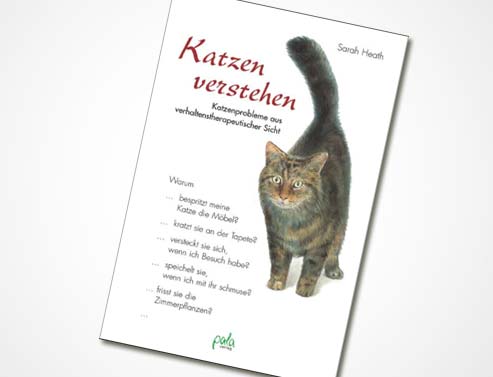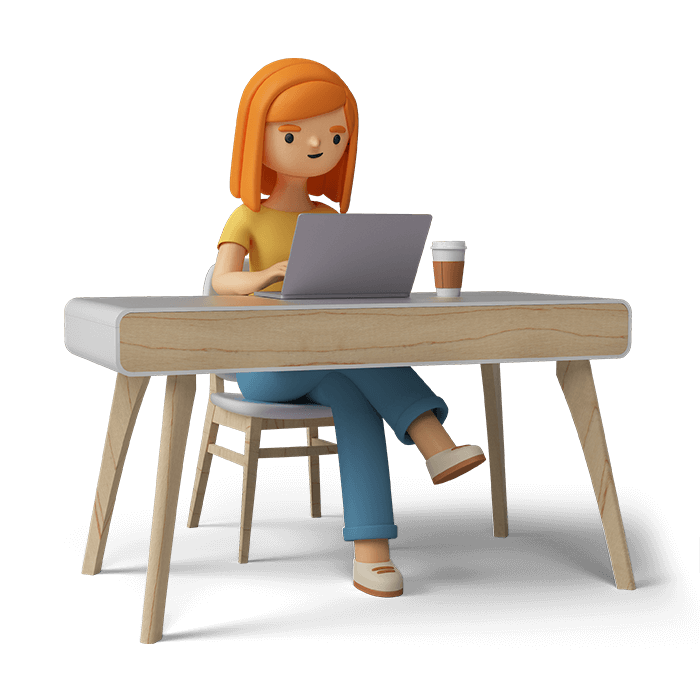The Basics About Keeping Cats.
When you decide to get yourself a pet, you make a decision about a part of your life. At the same time, you make a decision about the whole life of an animal.
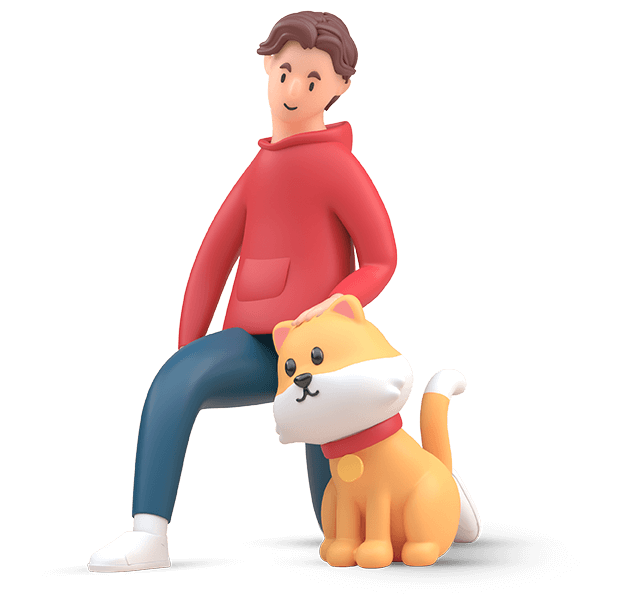
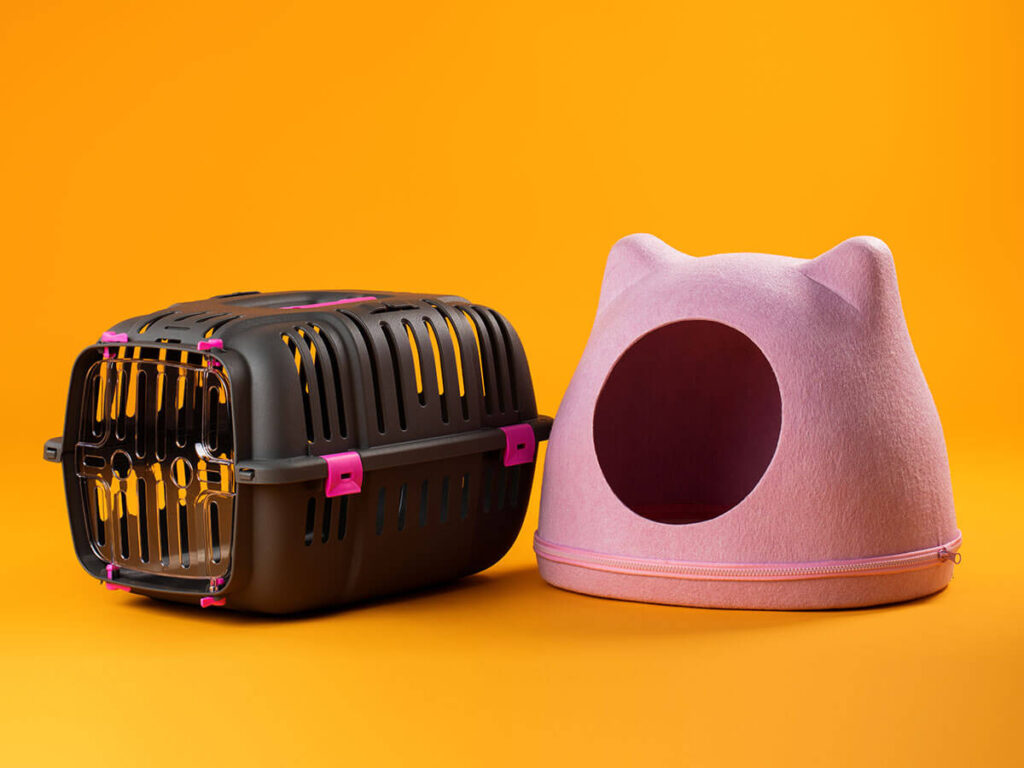
Basics
You decide about the whole life of the animal.
There’s nothing we need to add. In fact that says it all.
Yet, some make a hasty decision on getting a pet being hardly aware of the responsibilities it entails. The scope of this decision is unclear to many; they tend to forget that life is full of changes.
That’s why we’ve collected a few important aspects you’ll need to consider before you decide to get a pet. Although we’re talking about cats here, these principles apply to all living beings just the same.
Don’t buy cats from breeders, pet shops or dealers!
Countless cats are waiting for loving homes at animal shelters and small organizations. The ‘production’ of more and more animals must be massively reduced to decrease suffering.
We do not support any business models founded on the multiplication of animals. Make a responsible decision by opening your home to a cat that is currently living in an animal shelter or a rescue centre – this cat will be grateful to you.
In addition, cats waiting for you in these institutions already have their distinct characters. This makes it much easier to decide whether a cat and its prospective guardian are a good match and if the needs of all parties involved can be fulfilled. It also makes socialisation with other cats much easier.
A cat may live as long as 20 years.
In other words, your decision will affect your future quite radical. Therefore it is highly recommended to make long-term plans and check whether your goals in life are compatible with this. If you are already in an advanced age please think of the fact that life is limited and your pet needs to be taken care of.
Animals are not presents.
You’re not making anyone happy by giving him or her an animal as a present – least the animal! Such ‘special-occasion’ decisions are revised quickly; the joy of Christmas evaporates, and the birthday ambience vanishes.
Wenn sie Dich dessen erachtet, wird eine Katze Dein Freund sein, niemals Dein Sklave.
Théophile Gautier
Toilet & Co
What does a cat need?
Once you’ve made the decision to provide a home for a feline family member, it’s time to get everything ready by the time the newcomer arrives. So, the question is: what does a cat need?
Here’s our Top 10:
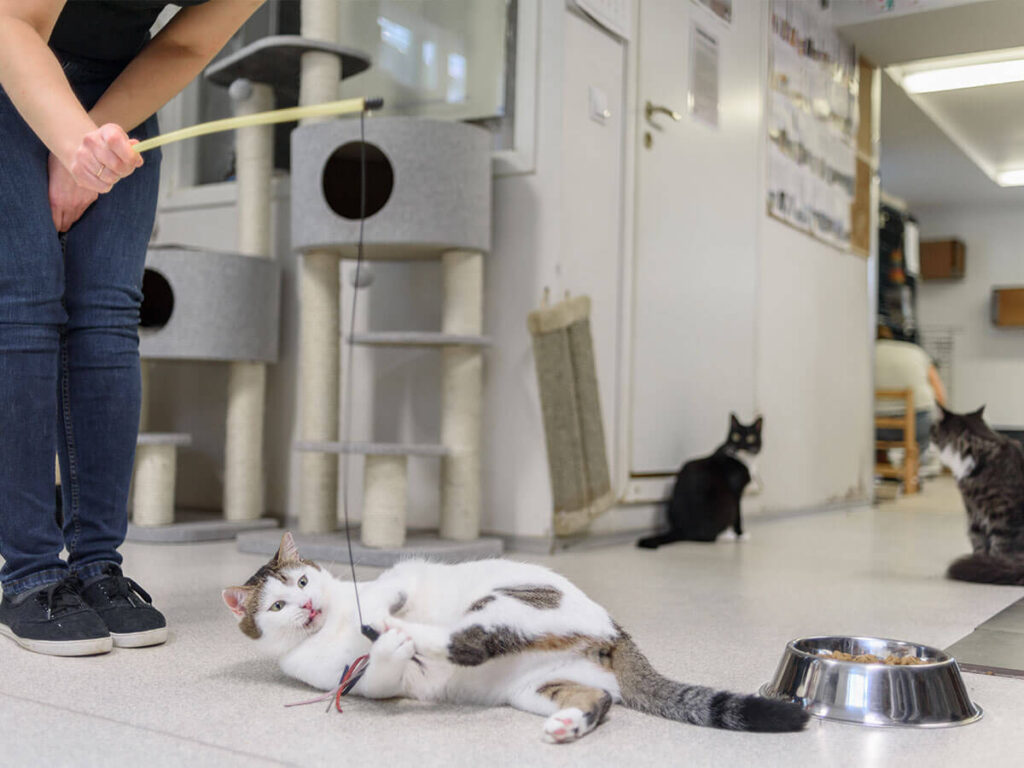
The litter box
Litter boxes can be open or hooded with or without doors or filters. Whether the litter box will be accepted however primarily depends on your cat. Filters are unnecessary because they are largely ineffective while doors drastically reduce acceptance and enormously increase dust inhalation when your cat is using the litter box, so we don’t recommend flip doors. The only decision here to make: an open or a hooded litter box.
We’d like to note here that a number of reasons for litter box problems can be attributed to inappropriately selected litter boxes.
If you observe a cat eliminating in nature you’ll find that the cat needs quite some space for it. Litter boxes available in most pet stores are much too small.
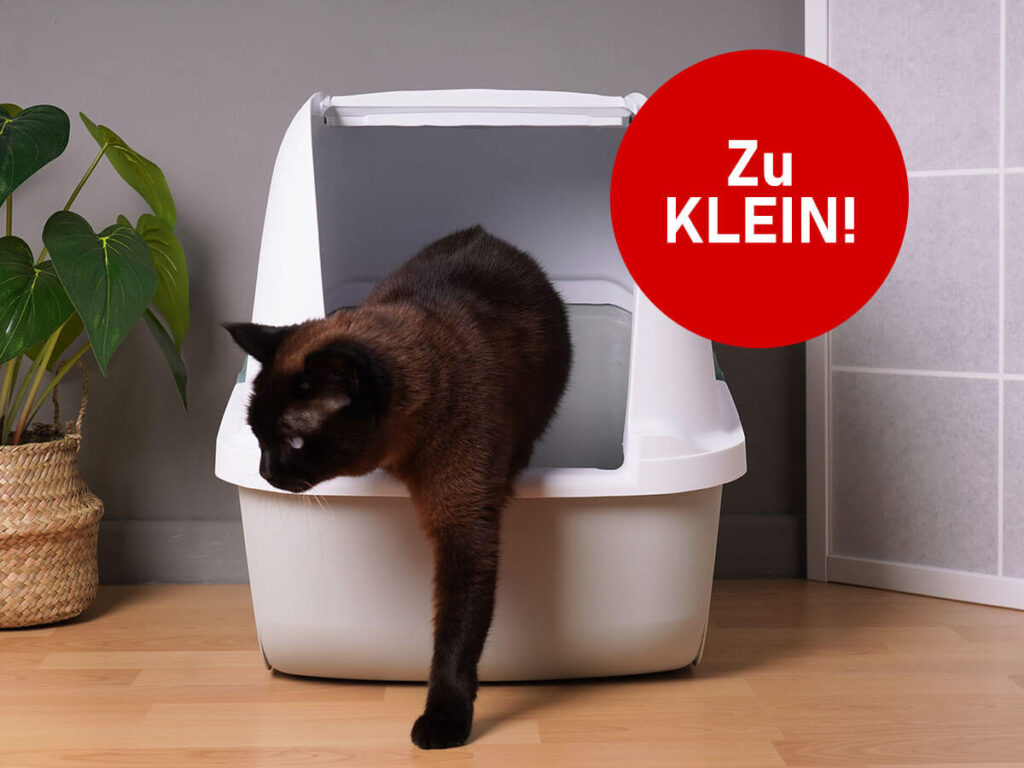
If you observe a cat eliminating in nature you’ll find that the cat needs quite some space for it. Litter boxes available in most pet stores are much too small.
Litter boxes with edges curved inward are also unsuitable because on the one hand, the edges only make the usable surface smaller; on the other hand, it is unpleasant for the cat when he or she bumps against them.
Many cats would still tolerate unsuitable litter boxes. It doesn’t mean however that your cat feels fine when using one. Nearly every large litter box without protective edges and without a hood is fine (The base of large rabbit cages or plastic bed storage boxes available at a particular Swedish furniture store are also just fine.)
The litter
There are non-clumping and clumping types of litter available. Most users prefer clumping litter because it is easier and more hygienic to use. Types of litter are:
Bentonit
Mineral litter (bentonite) clumps very well but it’s heavy and not biodegradable. In fact, bentonite should be disposed of on special waste disposal sites because it doesn’t decompose. In addition, its transport routes are absurdly long and a catastrophe for the CO2 balance. Plus, reports have been published describing its health risks to cats.
Silica gel
Silica gel litter does not clump but it’s dust-free. This litter is also non-degradable; in fact, it’s specifically processed sand. Silica gel litter is relatively expensive and requires intensive care. Yet, as it is dust-free, it is suitable for some extremely sensitive cats.
Wood-based pellets
Wood-based pellets are basically “non-clumping litter reversed”. When cleaning the litter box, you actually remove intact pellets while fine saw dust falls through the scoop holes. As with all wood-based pellets, its odour-control is good but cleaning the litter box is definitely more time-consuming.
Wood-based litter
Owing to its health and ecological aspects, wood-based litter is the best choice. Wood-based litter is biodegradable, often even compostable, it is extremely absorbent and lightweight. Some leave more dust behind than others. Its odour control is very good and its economy is second to none.
We recommend vegetable clumping litter for health, ecological and economic reasons!
When selecting the type of litter, please bear in mind that cats tend to eat litter sometimes – just like in nature where they eat soil every now and then.
This habit can have fatal consequences if bentonite or silica gel litter is used because these substances build a heavy clump in the stomach, which will then have to be removed in emergency surgery.
The litter scoop
A scoop requires no scientific specifications – it needs to be suitable for the litter, it should be neither too rough nor too fine. And of course, the more it fits the colour of the litter box, the better.
Bowls
Your cat needs a food bowl and at least one drinking bowl. The bowls should be flat and sufficiently wide because cats don’t like their whiskers being constantly nudged.
The bowls need to be easy-to-clean, meaning glass, ceramics or earthenware. Please wash up the bowls after each meal.
In nature, cats don’t drink where they eat, so double-bowls or dual feeding stations are unsuitable for this purpose.
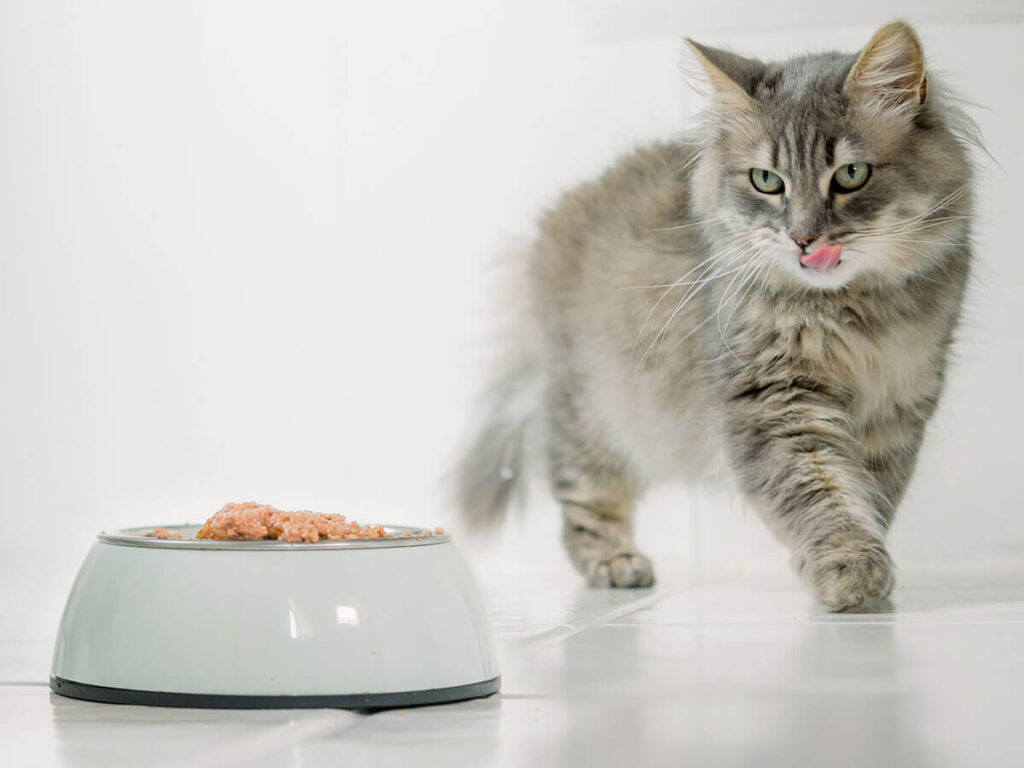
Place the water bowl at least 2-3 metres away from the food bowl or at a completely different spot. If you feed premium quality wet food, your cat may not drink at all but you’ll still need to offer water.
Fluid supply is crucially important for your cat anyhow. You may just as well enrich the food with a bit of water.
Katzen erreichen mühelos, was uns Menschen versagt bleibt: durchs Leben zu gehen, ohne Lärm zu machen.
Ernest Hemingway
Wet or dry food
Please click here to read about “Food“
Beds and dens
Make cosy retreat spaces available for your cat away from busy areas where there’s no draft. Whether it’s baskets, dens, blankets or pillows; your cat will show you his or her preferences after a few trials. Tastes differ. Make sure you offer diversity but don’t remove your kitty’s favourite pieces and places.
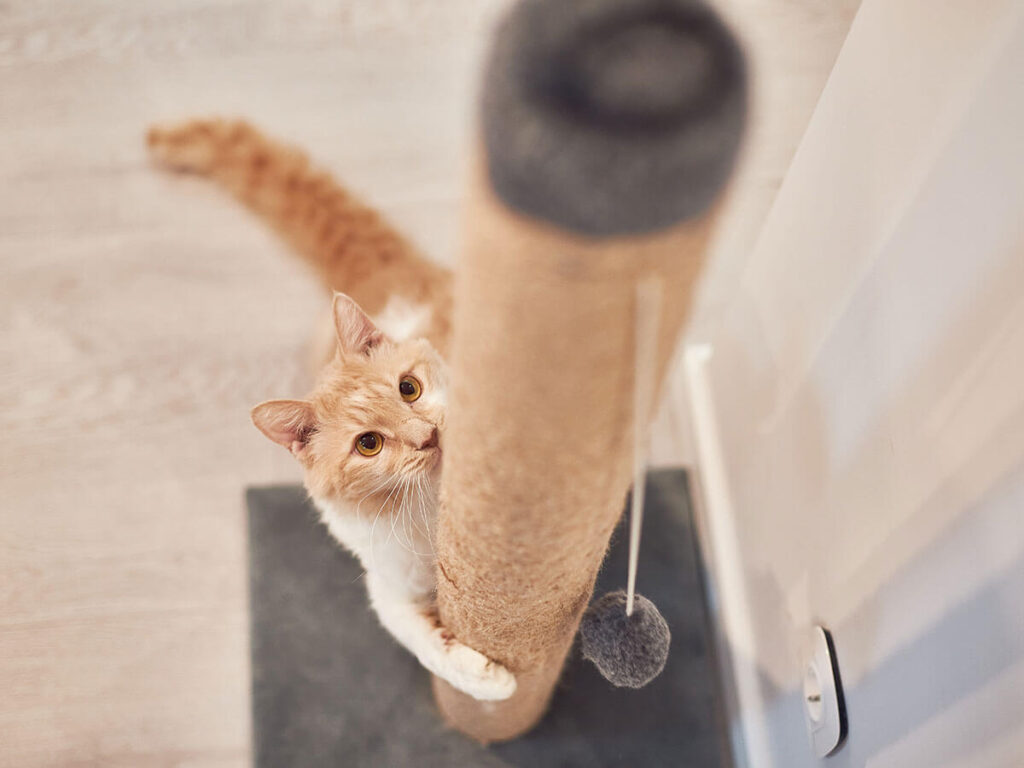
Cat trees and scratching posts
A cat tree for play and sharpening claws is a must. You can choose small, medium and large ones with dens, condos, ladders, you can even get ones made of solid wood or with water repellent ‘grass cover’ for use on the balcony.
When it comes to a cat tree, make sure it stands stable and no nails or other sharp objects that could injure your cat stick out of it. The sisal should by no means be fixed with a solvent-based glue to the post. Check for an overall nice production.
When selecting the cat tree, make sure at least one of the posts reaches a minimum of 60 cm unobstructed from the floor and is easy to access. Some cat trees have a basket or condo right at its base – which is wrong. Cats need the readily available post to be able to stretch from the floor upwards and sharpen the claws on their front paws. A scratching post with a single unobstructed pole of a metre or higher for larger cats are even better.
An additional scratching board may spare your furniture from getting scratched. You can also build a genuine climbing paradise from scratching boards.
Toys
Spielen ist für die Katzen, besonders wenn sie nur in der Wohnung lebt, sehr wichtig. Es ist ein Ersatz für das Jagen und stillt den Jagdtrieb, den jede Katze hat und den sie ausleben muss.
Play is very important for cats, especially indoor ones. It is a substitute for hunting, a need present in all cats that has to be met. Cats prefer interactive games, meaning playing with a cat lover or their guardians. Danglers for example are suitable for this purpose. Furry mice, balls, feather teasers and other toys appropriate for cats are also available.
Toys filled with catnip or valerian are also favourites. By all means avoid toys your cat can tear to pieces. Soft balls, furry mice with loose feathers or plastic buttons (the eyes of the mouse), rubber bands, wool threads are exciting but should never be used unattended. These are all things your cat may swallow.
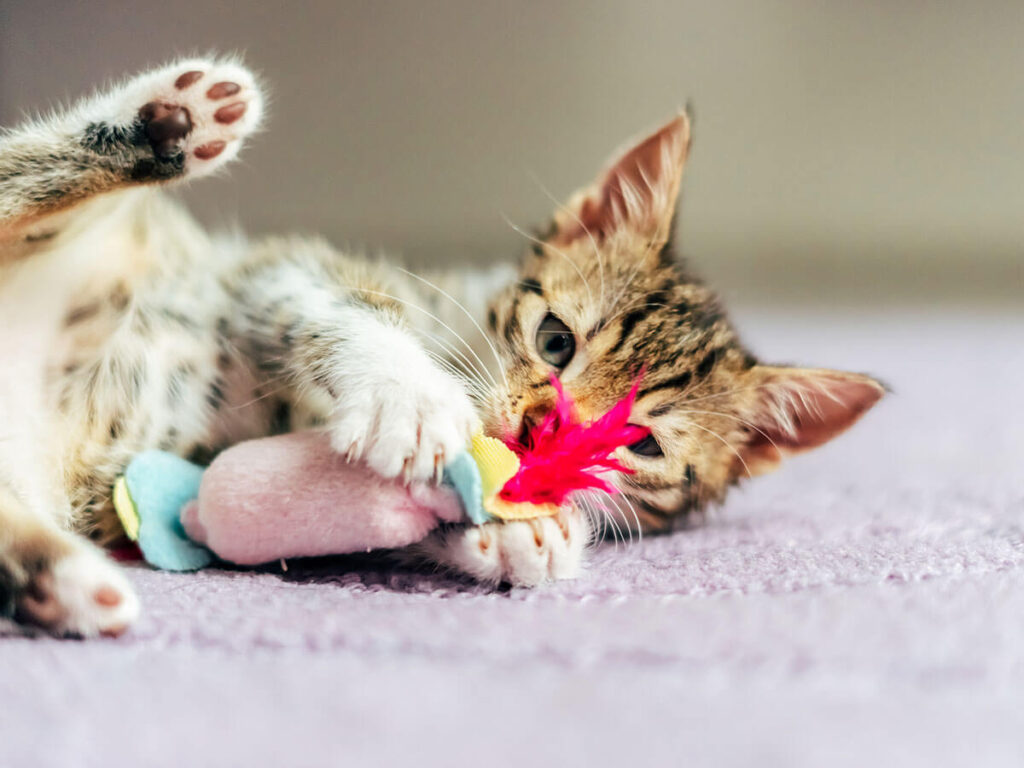
In the worst-case scenario, they get stuck in the stomach or the bowels causing obstructions or internal injuries.
Cats also like catching the light of a laser pointer. You need to make sure however that the laser ray does not hit the eyes of your cat because it causes retina injuries. Green laser pointers have a higher light output and offer gut visibility also by daylight even outdoors. Play sessions with a laser pointer should always be wound up with a treat because constantly fruitless hunting may lead to frustration.
Schon die kleinste Katze ist ein Meisterwerk
Leonardo da Vinci
Cat combs and brushes
This is a question of the cat’s coat type and needs. Domestic shorthairs do not need it. Many cats are happy though to receive a chest massage. But if your cat dislikes it, there’s no need to force it. It’s a different matter for cats with longer coat. Care is essential if your cat has longer fur. Brush bristles shouldn’t be too hard. A comb with rotating (loosely set) teeth causes less discomfort. Once again, it’s the cat to decide what he or she prefers.
We are happy to advise you.
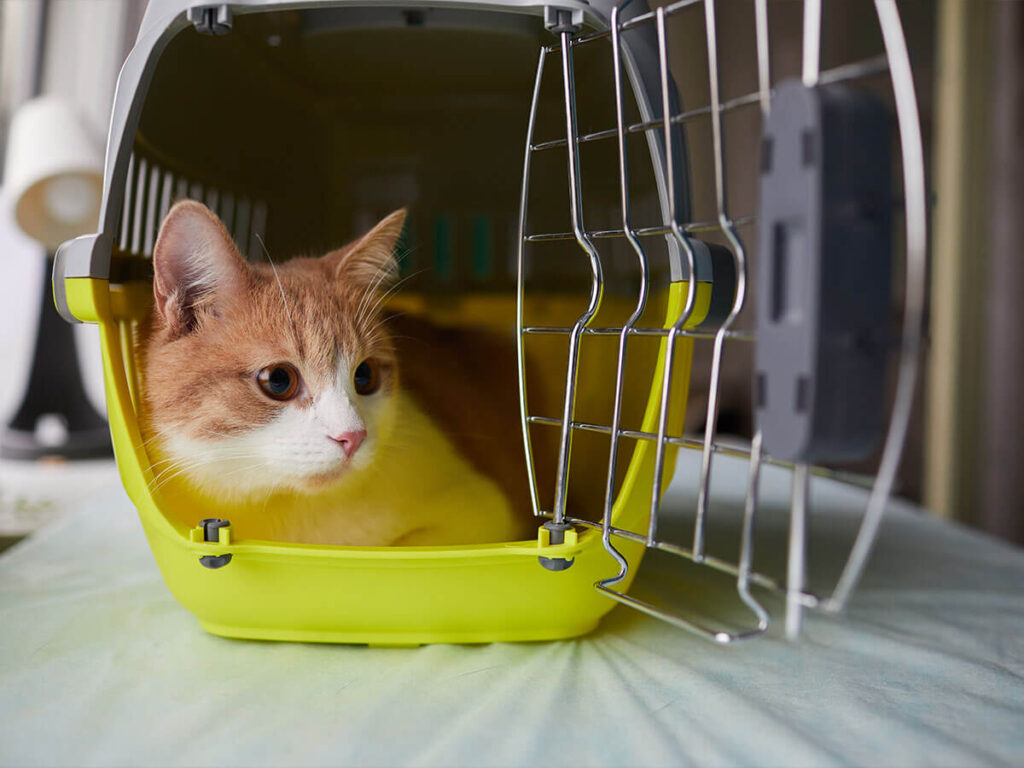
Cat carriers
We can give you a set of very clear recommendations here, especially because there are so many models available and some of them are cleary insufficient:
- The carrier should be made of easy-to-clean plastic. Owing to fear, your cat may urinate in it or soil it with gland secretions, which will have to be cleaned off without a trace.
- The door needs to close securely: press the base and the top from the inside apart (as if the cat were humping its back in the carrier. The door should not release at the hinges. This is a major and frequent issue even with expensive carriers!
- The carrier should be large enough. It should be sufficiently large for your (adult!) cat to lie in comfortably.
- The carrier must open through a door and also from above.
It’s helpful to keep the carrier freely accessible in your home and have it used by your cat.
If the carrier is associated exclusively with a visit to the vet, your kitty will make it very clear that she won’t even go near it when you get ready for the next appointment.
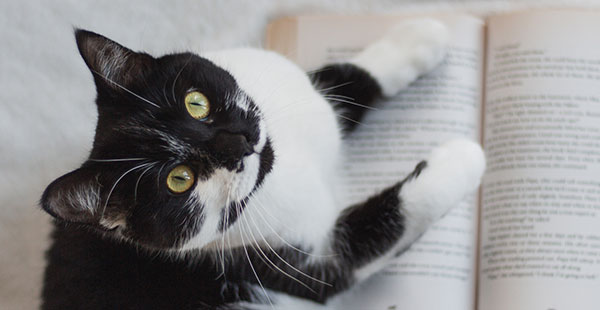
Literature
Our Literature recommendations (in German language)
Making the right choice in a myriad of cat books is difficult. Our recommendations are:
Monika Peichl: „Katzen impfen mit Verstand“
ISBN: 978-3-9811-2592-4
The author is a journalist and has published extensive knowledge about vaccination of pets in various media. She makes a point of not being counted among vaccination opponents. A book that builds valuable knowledge and provides essential foundations for understanding vaccination and how it works. Unfortunately, this book is now only available used. Subsequent editions are abridged and deal with pet vaccination more generally.
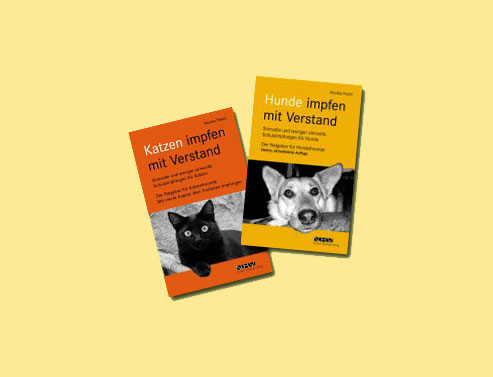
Hans-Ulrich Grimm : „Katzen würden Mäuse kaufen“
ISBN 978-3-5520-6049-4
The author has already written various books on eating habits and food production. Many of his books are bestsellers. This book can justifiably be understood as a black book for the pet food industry. By the way: Reading this book moved Reinhard Schüchel to found the company Prosa and to produce species-appropriate animal feed.
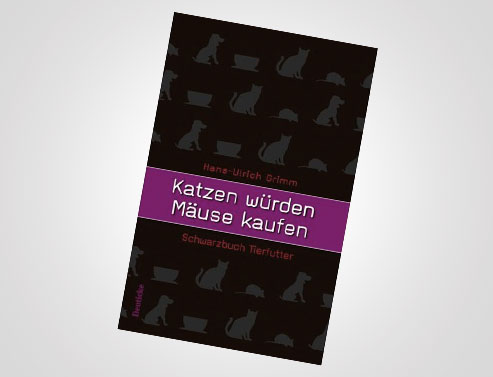
Dr. Jutta Ziegler: „Hunde würden länger leben, wenn …“
ISBN 978-3- 8423-2460-2
The author is a veterinarian herself and after many years had dared the courageous step into the public. A black book about the abuses in many veterinary practices. It also reveals the interconnections between the veterinary business and the feed industry. The book is built with many case studies and explains how just should not be treated and fed.
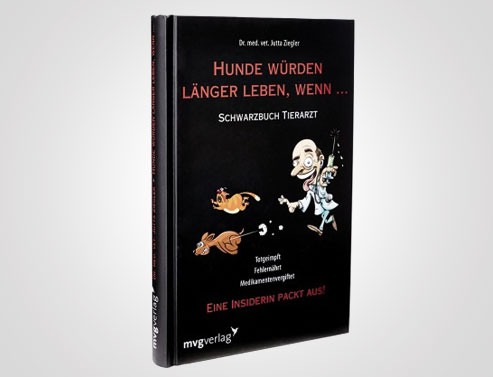
Sabine Schroll: „Miez, Miez – na komm!“
ISBN 978-3-8334-7962-5
The author has worked as a veterinarian for many years. She advises especially in cases of mental disorders. This book is a treatise on how to practice cat keeping in the home as species-appropriate as possible. You will learn a lot about ethological basics and detailed information about cat care and cat keeping.
Rather critically, however, we consider the recommendations on nutrition and medical treatment, regarding the explanations of cat physiology and cat psychology, the book is nevertheless highly recommended.
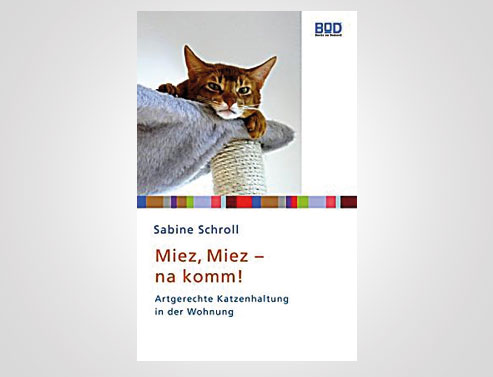
Sabine Schroll: „Aller guten Katzen sind … ?“
ISBN 978-3-8990-6431-5
An exciting and informative book for anyone who plans to live in a multi-cat household or already does. You will learn many details about the social behavior and the problems and solutions in the multi-cat household.
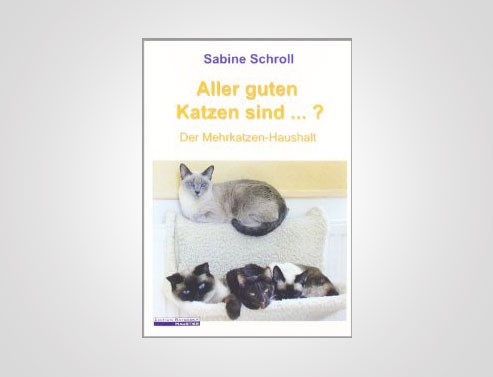
Sarah Heath: „Katzen verstehen“
ISBN 978-3-8956-6183-9
The author is an American veterinarian and behavioral therapist. She explains why the cat’s instincts motivate it to react in certain ways. Learn to understand these instincts and behaviors. This way you can allow your cats to be themselves without causing problems with the human environment.
